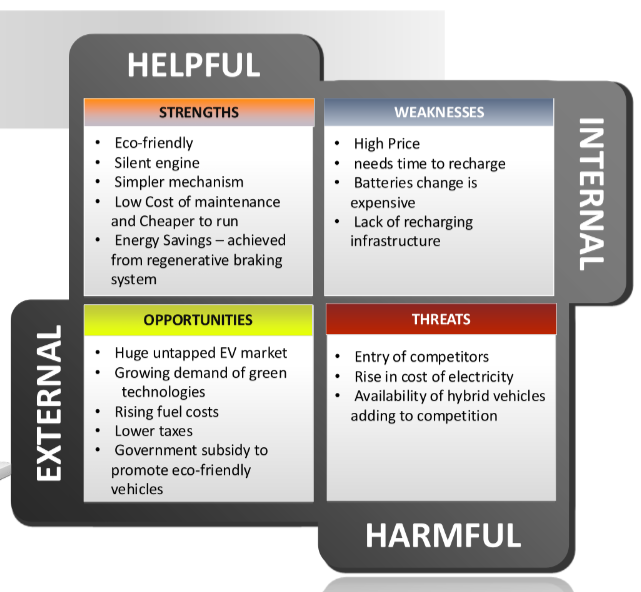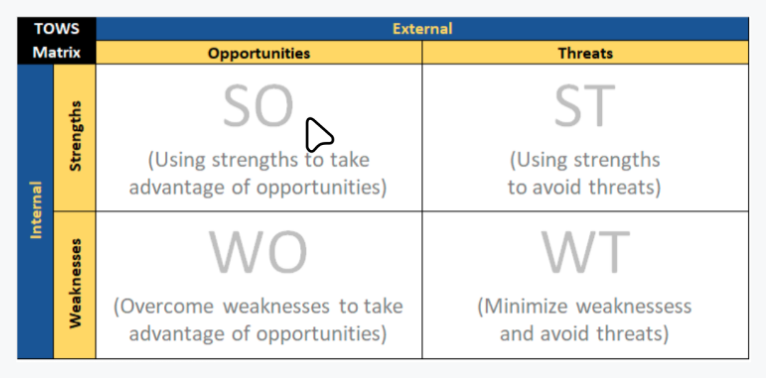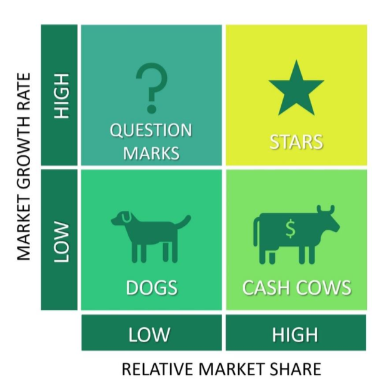Since the material is a lot, these notes are NOT comprehensive and just contain the stuff I thought might be extra important while reading. Read the entire thing during prep.
PYP Analysis
Only have access to one sample paper, and from that it looks like the following topics are most frequently tested.
- The 8 steps involved in planning + whatever block diagram is provided in the material.
Introduction and its Importance
What is planning?
A plan is a blueprint for goal achievement, a blueprint that specifies the necessary resource allocations, schedules, tasks and other actions to achieve the purpose.
Planning answers the following 6 basic questions
- What needs to be accomplished? What are the alternative routes to it?
- When is the deadline?
- Where will this be done?
- Who will be responsible for it?
- How will it get done?
- How much time, energy and resources are required to accomplish this goal?
8 Types of Plans
1. Purpose or Mission or Vision
Consists of the:
- Mission statement: What the company represents and values.
- Vision Statement: What the company wishes to become.
- Strategy and Goals: How the company strives to achieve its vision.
2. Goal or Objective
Objectives are defined as the important ends towards which organizational and individual activities are directed. Verifiable Objectives: Facilitate measurement of surplus as well as the effectiveness and efficiency of managerial actions.
3. Strategy
A comprehensive and all-inclusive plan to achieve said goals or objectives. A strategy is a plan that has 3 specific dimensions:
- Establishing long-term objectives
- Selecting a specific course of action
- Allocating necessary resources needed for the plan. Forming strategy is generally reserved for the top level of management.
4. Policy
Policies are also the plans in that they are general statements or in-company-understandings that guide thinking in decision making. Not all policies are hard-written, some are merely implied from managerial action. (Example → the practice of promoting from within, hiring university trained engineers, encouraging employee suggestion etc).
Policies define an area within which a decision is made and ensure that the decision will be consistent with and contribute to the objective.
5. Procedure
Described in a chronological order, procedures are a stepwise guide for the routine to carry out the activities.
6. Rules
Very specific statements that define an action or non-action. Non-flexible. They are the simplest type of plan. The guide actions without specifying a time sequence. Rules may or may not be part of procedure.
7. Programs
Programs are a complex of goals, policies, procedures, rules, task assignments, steps to be taken, resources to be employed and other elements necessary to carry out a given course of action. They are ordinarily supported by Budgets.
8. Budgets
Budgest are the statement of expected results expresses in numerical terms referred to as numberized programs.
Can be in terms of number of labour hours, units of production, financial terms, machine-hours etc. Budgets usually implement a program
- Variable or flexible budgets
- Program budgets
- Zero based budgets
Planning Classification
- Level: Corporate, Business, Functional
- Importance: Strategic, Operational
- Formality: Formal, Informal
- Approach: Proactive, Reactive
- Period: Short-term, Long-term
The most popular ways to describe lans are in the terms of their CONTENT, BREADTH, TIME-FRAME, SPECIFICITY and FREQUENCY OF USE.
- CONTENT (Strategic, Tactical and Operational): Upper level managers develop the strategic plans that apply to the entire organization. Lower level managers focus on tactical plans, that specify how the overall objectives will be achieved. Opeartional plans are limited in scope and are measured daily, weekly or monthly whereas strategic plans are broader, less specific and encompass five or more years.
- BREADTH (Strategic vs Tactical)
- TIME FRAME (Long-term vs Short-term):
- SPECIFICITY (Directional vs Specific):
- FREQUENCY OF USE (Single Use vs Standing): 5 years plus vs upto 1 year.
8 Steps of Planning
1. Being Aware of Opportunities
In light of the market, competition, what customers need/want, our strengths, our weeknesses.
2. Setting Objectives/Goals
Where we want to be, and when and what we want to accomplish.
3. Considering Planning Premises
In what environment (internal or external) will the plans operate?
4. Identifying Alternatives
What are the most promising alternatives to accomplishing our objectives?
5. Comparing The Alternatives
In light of the goals sought, which alternative will give us the best chance of meeting our goals at the highest profit and lowest cost?
6. Choosing an Alternative
Selecting which course of action we will pursue.
7. Formulating The Supporting Plans
Such as plans to buy equipment, materials, hire and train a new workforce and developing a new product.
8. Numberizing the plans by making Budgets
Develop such budgets such as Volume & Price of Sales, operating expenses, capital expenditures.
Mangement by Objectives (MBO)
A strategic management model that aims to improve the performance of an organization by clearly defining objectives that are agreed upon by both management and employees. Managers and employees define objectives for every department, project and person and use them to monitor subsequent progress.
MBO emphasizes on the following:
- Peformance appraisal
- Short term objectives and motivation
- Long-term planning
Key Result Areas → Areas in which performance is critical to the success of the enterprise.
Verifiable vs Non-Verifiable Objectives
| Verifiable Objectives | Non-Verifiable Objectives |
|---|---|
| To achieve a return on investment of 12% at the end of the current fiscal year | To make a reasonable profit |
| To issue a two-page monthly newsletter beginning July 1, involving not more than 40 work hours of preparation time (after first issue) | To improve communication |
| To increase production output by 5% by December 31, without additional costs and while maintaining current quality level. | To improve productivity |
| To design and conduct a 40-hour in house program on the “Fundamentals of Management” to be conducted this year involving not more than 200 working hours of the management development staff with 90% of the managers passing the exam. | To develop better managers |
| To install a computerized control system in the production department by December 31, requiring not more than 500 working hours of system analysis and operating with not more than 10% downtime during the first 3 months of installation. | To install a computer system |
Benefits of MBO
- The need for planning is recognized.
- It provides for objectives and accountability for performance.
- It encourages active participation.
- It helps in job enrichment.
- Good feedback system.
- Performance improved up and down the chain.
- Motivated Pople
- Leader/subordinate efforts that are focused on activities that will lead to goal attainment.
Weaknesses of MBO
- Failure to teach the philosophy of MBO.
- Failure to give guidelines to goal setters.
- Difficulty in setting goals.
- Emphasis on short run goals.
- Danger of inflexibility.
- In their desire to make goals verifiable, people may use quantitative goals and attempt to use numbers in areas where they are not applicable.
Problems of MBO
- Change adversely affects planning.
- Low morale reduces effectiveness.
- Lower level goals take precedence.
- Over-centralized authority limits participation.
- Paperwork.
Systems Approach to Management
An organization is made up of many inter-related sub-systems. Sub-systems should be studied in their inter-relationships rather than in mutual isolation.
Strategic Tools
Critical Question Analysis
- What is our business? Glass bottle manufacturers missed their opportunities by seeing themselves for too long as glass bottle makers rather than as liquid container manufacturers while plastic and metal containers come to replace glass in many cases.
- Who are our customers?
- What do our customers want?
- How much will our customers buy and at what price?
- Do we wish to be a product leader?
- Do we wish to develop our own new products?
Blue Ocean Strategy
It is a unique approach to business. It’s growth that encourages companies to create new market spaces instead of competing in saturated markets. Success can be found in blue oceans - untapped, uncontested market spaces ripe for growth.
The Blue Ocean Strategy pivots on two main principles:
- Value Innovation: This involves delivering superior value to customers through differentiation and low cost. It beats the competition by making it irrelevant by redefining industry boundaries.
- Creation of Uncontested Market Space
Advantages:
- Businesses can create new demand and tap into new markets.
- Businesses can focus on creating unique value propositions that are appealing to customers.
- Businesses can avoid the cutthroat competition of traditional markets.
- Businesses can achieve sustained profitability.
Challenges:
- High risk of failure.
- Significant resource investment.
- Uncertainty of unexplored markets.
| RED OCEAN | BLUE OCEAN |
|---|---|
| Compete in existing market space | Create uncontested market space |
| Beat the competition | Make the competition irrelevant |
| Exploit existing demand | Create and capture new demand |
| Make the value-cost trade-off | Break the value-cost trade-off |
| Align the whole system of a firm’s activities with its strategic choice of differentitation or low-cost | Align the whole system of a firm’s activities in pursuit of differentiation and low cost |
| Examples → Flipkart with grocery delivery, PayTM with a new, more convenient way of digital transactions. |
Four Actions Framework for Blue Ocean
- Eliminate → eliminate factors on which the company has been competing.
- Reduce several factors below the company standards.
- Raise key factors that will assist in making the competition irrelevant above the standards.
- Create some new ideas, factors and steps that the company needs to achieve its blue ocean goal.
SWOT Analysis
Strengths, Weaknesses, Opportunities, Threats
 Here we have an example exercise, a SWOT analysis done on a car manufacturing company that has recently launched its EV products.
Here we have an example exercise, a SWOT analysis done on a car manufacturing company that has recently launched its EV products.

TOWS Matrix

Case Study of Apple
- SO → Apple’s strengths are strong brand awareness and customer loyalty along with strong capabilities in product design and aesthetics. Combining these with the growing popularity of touchscreen smartphones which was a good opportunity, is what led to the launch of the first iphone.
- ST → Apple’s strengths are its product design and strong brand loyalty. It took advantage of these strengths by keeping its lightning connector propreitary, thus driving revenue. However, now Apple faces a threat in the EU where local regulators are forcing Apple to adopt Type-C in its devices to reduce unnecessary electronic waste. This could have led to a significant loss in revenue, but by capitalising on its brand loyalty, a sizeable portion of its consumers will buy Apple’s Type-C over cheaper Type-C alternatives.
- WO → Apple’s weakness is its smaller product portfolio, thus Apple is not the quickest to capitalize on latest market trends and gaps. Apple overcame its weakness when the opportunity of wearables started gaining traction with its own line of wearables which proved to be a success.
- WT → Weakness is its digital media sector. The threat is that this sector is growing day by day. Apple TV+ is a WT strategy.
Business Portfolio Analysis (BCG Matrix)

Why BCG Matrix?
To assess:
- Profiles of products/businesses
- Cash demands of products
- Product development cycles
- Resource allocation and divestment decisions
Question Marks
- Most businesses start out as question marks.
- Can turn into stars and eventually cash cows but can also become a dog.
- Investments should be high for question marks.
Stars
- Market leaders, require heavy investment to maintain its large market share
- Attempts should be made to hold market growth otherwise it will turn into a cash cow.
Cash Cows
- Foundation of the company, stars of yesterday.
- Generate more cash than required.
- Extract profits by investing as little as possible.
- Located in a mature industry, not growing or declining.
Dogs
- Cash traps, no potential to bring in much cash.
- Must be minimized.
- Business is situated in a declining stage.